It is a common misconception that plagiarism and duplicate content are one in the same: the act of copying someone else’s work or borrowing their ideas. Plagiarism is the stealing (or misuse) and publication of another person’s language or ideas and the depiction of them as one’s own work.[1] Plagiarism is a serious ethical offense—it is academic dishonesty and a breach of journalistic ethics. Duplicate content, however, refers to several websites that have the same, or very similar, content. Why does this matter? Duplicate content can affect your SEO ranking. Search engines aim to give users the best search results, and when the exact same content appears in multiple places, search engines give less consideration to websites that have duplicate information.
The Nuts and Bolts of Plagiarism
The act of plagiarism is not a crime, but can be considered copyright infringement as defined by copyright law, but they are not equal concepts. Copyright infringement is, according to Copyright.gov, “when a copyrighted work is reproduced, distributed, performed, publicly displayed, or made into a derivative work without the permission of the copyright owner.” Plagiarism is a concept defined and punished by institutions (i.e., professional associations, educational institutions, and commercial entities—such as publishing companies). However, not all instances of plagiarism are intentional. According to the Senate Faculty Committee on Academic Honesty at the University of California at Irvine:
Ethical writers make every effort to acknowledge sources fully and appropriately in accordance with the contexts and genres of their writing. A student who attempts (even if clumsily) to identify and credit his or her source, but who misuses a specific citation format or incorrectly uses quotation marks or other forms of identifying material taken from other sources, has not plagiarized. Instead, such a student should be considered to have failed to cite and document sources appropriately (“Tips for Promoting Academic Honesty”, 2016, p. 1).[2]
The Nuts and Bolts of Duplicate Content?
Duplicate content is content that appears in more multiple places online. Search engines define the original place of content as a location with a unique web address (URL). While not exactly a penalty, duplicate content can still impact SEO rankings; and the tech website Moz presents three issues for search engines: [3]
1. Search engines don’t know which version(s) to include/exclude from their indices.
2. Search engines don’t know whether to direct the link metrics to one page, or keep it separated between multiple versions.
3. Search engines don’t know which version(s) to rank for query results.
This presents a problem for the average person (such as a blogger) or website owner because they could suffer ranking and traffic loss from search engines trying to rank the most authoritative version. Should you worry about duplicate content? No. If your duplicate content isn’t malicious, you likely don’t have to worry.
In most cases, website owners unintentionally create duplicate content by:
· Copied Content: Your content being republishing on other sites is the most common source of duplicate content, but this is also a problem for e-commerce sites, especially when dealing with product information. If many websites sell the same merchandise and use the manufacturer’s descriptions, duplicate content will pop up in several locations.
· HTTP vs. HTTPS or WWW vs. non-WWW pages: If your site has separate versions of the same content at “www.domain.com” and “domain.com”, or “http://domain.com” and “https://domain.com”, you are effectively creating duplicate content.
· URL variations: URL parameters (e.g., analytic code, click tracking, or session IDs) can cause duplicate content. An example of this is when printer-friendly versions of content are indexed, causing multiple versions of the page.
Wrapping it up: The Difference between
Plagiarism and Duplicate Content
Plagiarism is stealing and/or using someone’s work or ideas and claiming it as your own. Duplicate content is when the same content shows up on more than one webpage. It is important to note that with duplicate content, crediting it to the original source does not change the fact that it is duplicate content. While search engines penalize for duplicate content that recognizes the source, they do not typically rank the copied content higher since SEO will identify the original author and rank that source higher.
*Note that both duplicate content and plagiarism can be used interchangeably, but once you add the source, it stops being called plagiarized content but can still be called duplicate content.
Unsure on how to fix your duplicate content issues? You’re in luck! We have written a blog on how to use canonical tags to fix that problem. Read all about canonical tags here.
If you aren’t sure if issues with duplicate content are affecting your website’s performance, Divergent Web Solutions can perform a full SEO Audit to identify any issues that affect how your site is crawled and indexed. Once the issues are identified, you can start fixing them. Contact us today!
Additionally, if you aren’t sure if your writing falls under the scope of plagiarism, Elite Research can perform a full plagiarism check to identify any potential issues. Once the issues are identified, you can start fixing them. Contact them today at consulting@eliteresearch.com!
_____________________________________________________________________________________
Divergent Web Solutions creates high-quality websites and is a full service web-presence firm, which supports small businesses, by creating space and focusing on their design, marketing, social, and/or development platforms where they do not have to pay the price of hiring a custom developer. Contact us for a free consultation, and we’ll develop a customized quote tailored just for your unique needs and budget at info@divergentwebsolutions.com
[1] Definition taken from “Strategies for Preventing Plagiarism – A Case Study of Top Indian Universities”, Dhusia 2017, URL: http://www.informaticsjournals.com/index.php/gjeis/article/viewFile/16191/13671
[2] Quote and information taken from “Tips for Promoting Academic Honesty”, Senate Faculty Committee on Academic Honesty 2016, URL: http://www.writingcenter.uci.edu/wp-content/uploads/sites/28/2016/03/AcademicHonestyTips.pdf
[3] Information taken from “Duplicate Content”, Moz 2017, URL: https://moz.com/learn/seo/duplicate-content
